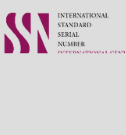Advances in diagnosis of Mycobacterium tuberculosis complex: Journey from conventional to Genotyping techniques and their importance
Keywords:
Genotyping, Mycobacterium tuberculosis, MTB complex, Epidemiology, DiagnosisAbstract
Tuberculosis rests a foremost global health concern being categorized as a rampant by World Health Organization. Although an ancient disease but tuberculosis had no diagnostics for long. Actual tubercle was said to be first discovered by Sylvius in 1679, Benjamin Marten during 1720 came up with the idea for first time that minute living organisms may be the reason for TB and presented possible insights of human to human transmission of disease through direct contact. Robert Koch finally discovered MTB during 1882 using a special staining method enabling conjuring up of disease causing organism. Primary diagnosis of tuberculosis is based on observation of acid fast bacilli by smear microscopy and culturing the clinical specimens to isolate Mycobacterium tuberculosis. In cases of extra-pulmonary tuberculosis, therapeutic and clinical decisions are to be taken afore availability of definite diagnosis. Sensitivity of smear microscopy is very poor while gold standard culture takes long time of 6-8 weeks. Use of polymerase chain reaction (PCR) through amplification of mycobacterial DNA provided promising outcomes. Present discussion concludes the success in development of various molecular techniques for identification and fingerprinting of MTB complex.
Downloads
Downloads
Published
Issue
Section
Categories
License
Copyright (c) 2024 Chronicles of Biomedical Sciences

This work is licensed under a Creative Commons Attribution-NonCommercial 4.0 International License.



